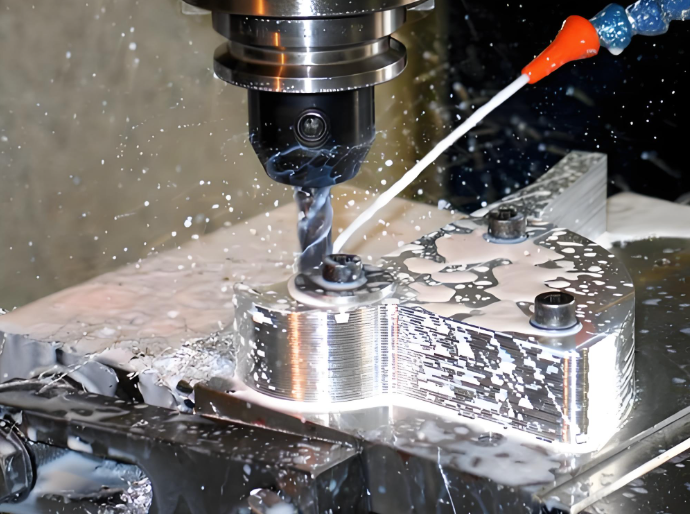One article will take you to understand CNC machining
In the development process of manufacturing industry, CNC machining technology is undoubtedly a revolutionary progress. CNC (Computer Numerical Control) machining is an automated machine tool that uses a computer for digital control. This technology controls machine tools through programming software instructions to perform complex machining tasks. This article will introduce in detail the basic principles, advantages, operation processes, application fields and future development trends of CNC machining.

Ⅰ. Basic principles
CNC (computer numerical control) machining is a "subtractive manufacturing process" (3D printing technology is an "additive manufacturing process") that uses computerized machine tools to create custom-designed parts. The computer uses programming code to instruct the machine tool to cut (subtract) material until it forms the part of the input design.
CNC machine tools are based on traditional machine tools and equipped with a numerical control system. This system can interpret instructions written in G code (universal coding language) or other symbolic languages and convert them into electrical signals to control the movement and processing of machine tools. CNC machine tools can perform cutting, milling, drilling, grinding and other processing methods, and can process various materials, including metal, plastic, wood, glass and composite materials.

Ⅱ. The advantages of CNC processing are mainly reflected in the following aspects:
1. High precision: CNC machining can achieve high-precision processing, which is particularly important for mass production and processing of complex parts, and meets the strict requirements for precision in modern manufacturing.
2. High efficiency: CNC processing greatly reduces manpower requirements and can operate continuously without interruption, which not only improves production efficiency but also reduces production costs.
3. Diversity: CNC machining can process various complex surfaces and shapes to meet the needs of different fields.
4. Automation: CNC processing is an automated processing method that reduces manual intervention and improves production efficiency.
5. Flexibility: CNC processing has high flexibility and can adapt to different production needs, achieving single-piece production and small batch production.

Ⅲ. The operation process of CNC machining is roughly as follows:
1. Design of parts: Design according to the requirements of parts, including appearance, size, specifications, processing technology and other information.
2. Write processing programs: Convert the designed parts into processing programs through CAM software.
3. Choose the right tool: Choose the right tool according to the shape and processing requirements of the part.
4. Prepare machine tools and fixtures: Prepare suitable machine tools and fixtures according to the processing program and component size.
5. Processing preparation: Carry out processing preparation work according to the processing program, including installing tools, adjusting the initial position, determining the processing sequence, etc.
6. Processing operations: Carry out processing operations according to the processing procedures.
7. Inspection: After processing, the finished product is inspected to ensure that it meets the design requirements.

Ⅳ. Application fields of CNC processing:
1. Metal processing: Suitable for milling, drilling, boring and other processing of various metal materials, such as aluminum alloy, steel, copper, etc.
2. Plastic processing: used for injection molding and extrusion processing of plastic parts, including ordinary plastic products and engineering plastic products.
3. Wood processing: Suitable for wood cutting, carving, grooving and other processing operations, often used in furniture manufacturing, wood carving art and other fields.
4. Precision parts processing: Especially suitable for processing precision parts that require high precision, such as optical devices, molds, hardware, etc.

Ⅴ. Future trends of CNC processing:
1. Multi-functionality: CNC machine tools will increasingly integrate multiple processing functions to achieve integrated processing of multi-station and multi-process processes.
2. High precision and efficiency: With the continuous advancement of technology, CNC machining will achieve higher processing precision and efficiency to meet the needs of more fields.
3. Intelligentization and networking: CNC processing will develop in the direction of intelligence and networking, realizing functions such as remote monitoring and fault diagnosis, and improving the controllability and flexibility of the production process.
4. Flexible manufacturing: CNC systems will be more flexible and able to adapt to different types and specifications of parts processing needs to achieve flexible manufacturing.
5. Additive manufacturing: Combining additive manufacturing technology to achieve rapid manufacturing of complex structural parts.
6. Human-machine collaboration: Human-machine collaboration robot technology will be integrated with CNC systems to achieve a more flexible and efficient production method.
7. Green manufacturing: Research more environmentally friendly processing methods to reduce energy consumption and waste.

CNC machining is one of the core technologies of modern manufacturing. Its precision, efficiency and reliability have brought a qualitative leap to industrial production. With the continuous improvement and innovation of related technologies, CNC machining will become more powerful and promote the development of manufacturing industry to a higher level.



